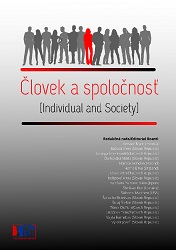“We are Slovaks too, just not in that way” The Experience of the Slovak Minority Youth from Hungary Studying in the Kin-State
“We are Slovaks too, just not in that way” The Experience of the Slovak Minority Youth from Hungary Studying in the Kin-State
Author(s): Rita HornokSubject(s): International relations/trade, Higher Education , State/Government and Education, Ethnic Minorities Studies, Identity of Collectives
Published by: Spoločenskovedný ústav SAV, Slovenská akadémia vied
Keywords: Slovak Minority; Minority Youth; Minority Identity; Kin-State Engagement; Hungary; Slovakia; Education;
Summary/Abstract: The article is devoted to the study of national identity and ethnic minority – kin-nation relations, examined through the subjective lens of the Slovak minority youth from Hungary studying in the kin-state. Slovakia offers a government-funded scholarship programme for trans-border Slovak diasporas and autochthonous minorities, as part of the Slovak state policies towards Slovaks living abroad. The scholarship programme provides a framework in which ethnic minority – kin-nation relations are analysed, at an inter-personal and inter-group level. This framework has been chosen as a subject of study for 3 main reasons: 1) the field of education is considered by the Slovak government as one of the most prominent areas of kin-state engagement, 2) the Slovak community in Hungary relies heavily on the Slovak scholarship programme in developing the students’ language competencies and professional skills, especially in the field of Humanities, i.e. in Pedagogy, especially, 3) the scholarship programme is also seen as an instrument facilitating a stronger connection to the Slovak nation and commitment towards Slovak identity; as a result of which students may consequently display a greater interest and engagement in the life of Slovaks in Hungary. The main objective of the research is to uncover the minority students’ personal narratives and interpretations about their experience of encountering the kin-nation, and their reflections on their own national identity. The empirical research, furthermore, focused on analysing perceived group-belonging, and the connection points between the members of the Slovak minority in Hungary and the Slovaks in Slovakia. The research was carried out through 11 in-depth interviews with the scholarship recipients, studying in Slovakia in the period of 2016 – 2019, over at least 6 months. The research findings – according to which students reported hybrid [Slovak-Hungarian] national identity – show that respondents do not see nationality as a bounded, one dimensional category; their answers represented a wide variety of identification patterns, including the following combinations: ethnic Slovak+civic Hungarian, hybrid Local+civic Hungarian, civic Hungarian+European, ethnic Slovak+European, hybrid Local+European. Despite their multidimensional identity, minority students perceived that their environment often pressures them to choose between one of the two seemingly mutually exclusive national categories: being Slovak or Hungarian, in all social environments; in interactions with Slovaks from Slovakia, Hungarians from Slovakia, as well as Hungarians from Hungary. Although the length of the scholarship programme would provide space for the incorporation of various nationbuilding and community-building practices, these aspects of the programme until now are largely underdeveloped. Slovak minority students from Hungary upon their arrival to the kin-state realize that Slovaks in Slovakia have little knowledge about the existence of Slovak autochthonous minorities, which are generally not seen by their peers as integral parts of the Slovak nation. The perception of the Slovak students from Hungary becomes even more complex, as they are often mistaken to be ethnic Hungarians from Slovakia, and their minority situation is compared to them. The lack of knowledge about Slovaks in Hungary from the kin-nationals, however, did not result in the devaluation of the students’ minority identity, but conversely, it led to a strengthened appreciation of the distinctiveness of the minority culture’s features. In the case of Slovak youth from Hungary, connection points with Slovaks from the kin-state are not found in the contemporary Slovak culture, but primarily in attributes they experienced as part of the traditional Slovak culture in Hungary. The main boundaries between groups as perceived by the students were language usage/competence and ethnic prejudice. The scholarship programme had positive outcomes concerning the connectedness between the Slovaks from Hungary and Slovaks from Slovakia on the individual level, and it contributed to a deeper knowledge about the Slovak state and the Slovak (modern) culture among minority students, as well as highly improving the students’ language skills. Yet, as a group, the Slovak minority in Hungary generally remains unknown among their Slovak peers, and the programme carries untapped potential, especially in the areas of community building between the members of external minorities and the kin-nationals. As reported by the research participants, higher initial Slovak language competency, more familiarity with contemporary Slovak culture, politics, and art among minority students, and higher awareness about the situation and history of the Slovak minority in Hungary among kin-national peers would improve their experience.
Journal: Človek a spoločnosť
- Issue Year: 23/2020
- Issue No: 4
- Page Range: 57-73
- Page Count: 17
- Language: English

